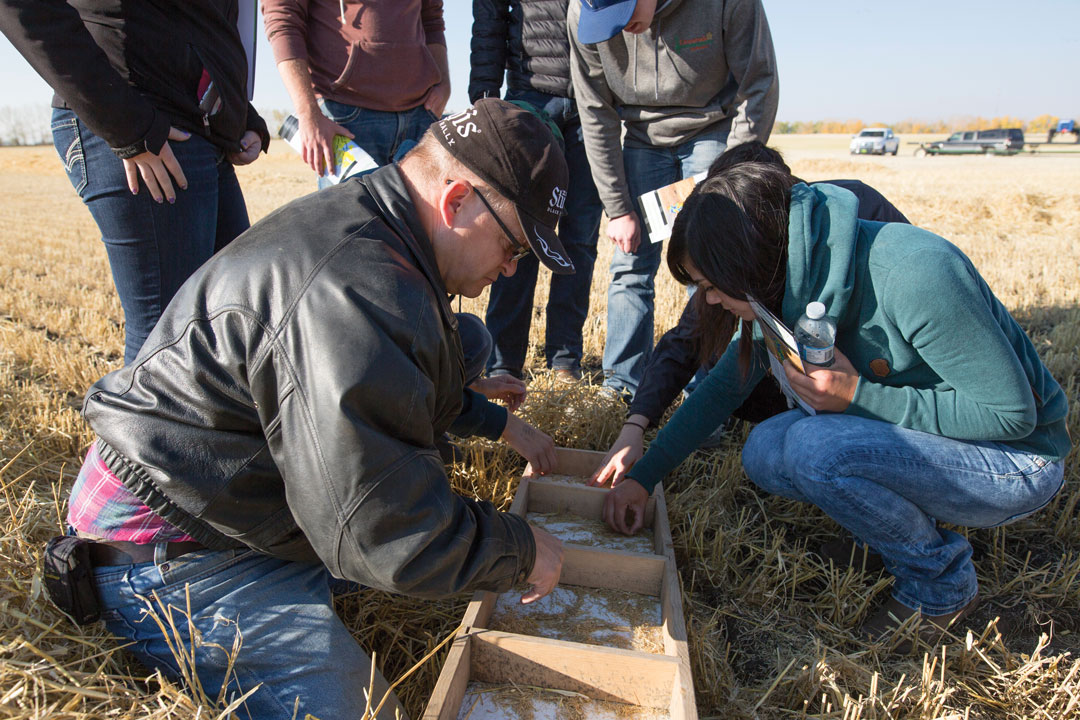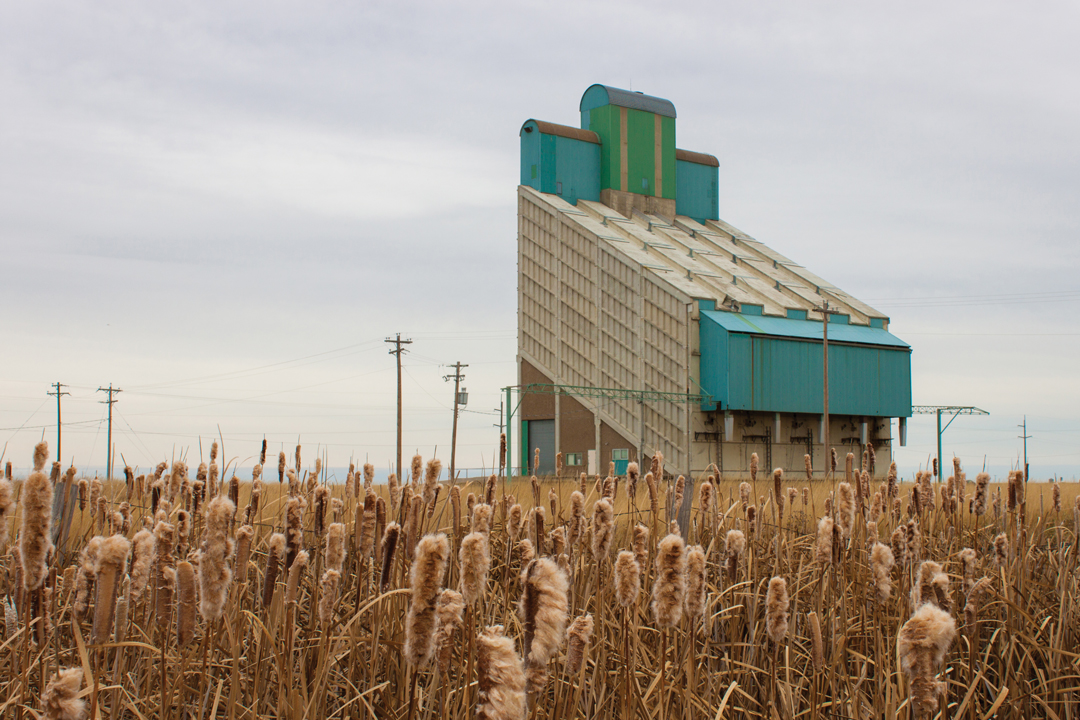SMART AGRI-FOOD SUPERCLUSTER
FIFTY-THREE PARTNERS AGREE TO BRAND CANADA AS A SAFE, SUSTAINABLE FOOD SOURCE
BY NATALIE NOBLE
On an effort to grow the economy and create jobs, the Canadian government will invest $950 million to generate partnerships that will drive innovation through the Innovation Superclusters Initiative. Western Canadian agriculture stands to benefit in a big way through the proposed Smart Agri-food Supercluster (SASC), shortlisted in a group of nine out of more than 50 competing proposals in October of last year.
“Our government’s Innovation Superclusters Initiative has started conversations and created solid partnerships between government, the private sector, academia and communities,” said Navdeep Bains, minister of innovation, science and economic development. “In today’s knowledge-based economy, this collaboration is essential. Together, we are building the economy of the future, creating the jobs of today and tomorrow, and gearing up for global success that will benefit all Canadians.”
Government and industry are equal investing partners over its five-year duration. The SASC is a consortium of industrial, academic, farmer and government partners; its intent is to use its funding to make Canada the preferred global supplier of sustainable, high-quality, safe food. The central areas of focus are better utilization of existing ag data, improvement of trade opportunities and job creation. Climate change, sustainability and nutrient stewardship are also principal themes.
The SASC will be led by Agrium, with Olds College acting as lead institute. “We are very encouraged by the work that’s been done to date and by the level of support,” said Olds College president Stuart Cullum. “We have a very strong proposal.”
The college can take a leading part in the SASC largely due to the recent creation of its smart agriculture facility, the Werklund Agriculture Institute. “The institute creates great opportunity for companies and our ag sector to work, play, design and learn,” Cullum said, noting students will be exposed to cutting-edge technology while rubbing shoulders with some of the world’s best ag and tech companies.
The 53 SASC partners see opportunities to enhance the ag sector in areas such as nutrient stewardship and sustainability, while generating substantial economic and environmental benefits for the sector. A collaborative effort to create a mechanism of system-level solutions for the challenges and opportunities in ag is also a priority.
Bill Whitelaw, executive vice-president of SASC partner organization Weather Innovations (WIN) and SASC steering committee chair, said the supercluster process brings great opportunity for industry stakeholders to connect each link in the value chain. The goal is to achieve a more efficient, seamless and integrated movement of the ag chain from the products and processes that precede the deployment of field inputs all the way to food consumption in Canada and around the world, he said. “It’s a way for all of us along the agri-food chain to be better at what we do.”
This group of companies, government agencies and post-secondary institutions worked to identify areas of frustration in the industry, such as data. “We’re drowning in data in ag, but it’s all stuffed in silos and there’s currently no efficient way of connecting those data silos to each other,” said Whitelaw. “Key goals are better data management, better decision-making capabilities and transparency into the data and what it’s telling us about the way we produce what we eat.”
In pursuit of trade opportunities, the SASC will work to solidify Canada’s global reputation as a logical, go-to global ag leader. The group’s job creation ambitions are likewise aimed at strengthening the industry. “This includes everything from making sure our farms are effectively staffed—including the right skills and talents in the tech space—all the way up the value chain,” said Whitelaw. “Whether it be through formal post-secondary university training, vocational training or through the basic craft skills, we will ensure the money invested has a clear line of sight to permanent job creation.”
The SASC is also moving forward on climate change and sustainability. The group unanimously agrees that doing things right on the farm is the only way to secure an environment that will continue to support agriculture. For Whitelaw and WIN, a big part of achieving these goals is understanding climate dynamics. As a consulting business, WIN utilizes technologies and tech tools related to meteorology and weather condition interpretation. The company helps farmers, producer groups and governments make better decisions in areas that include integrated pest solutions and disease.
“WIN is looking at what western Canadian soil will look like in 15 years, relative to understanding what we can control and how we can respond,” said Whitelaw. “The idea of mitigating the impact of production on our land, water and air—nobody at that table would say these two concepts are not connected at the hip.”
The supercluster partners realize that by serving the ag sector, they’re serving themselves, and that putting ag first is good for everyone. “We hope by investing in research, development and project innovation, we’re all going to make more money and bring value back to our shareholders,” said Whitelaw. “Ultimately, we all benefit because we get a safer and more secure food supply.”
Cullum agreed with Whitelaw that Canada has great capabilities and capacities in its farmers, companies and tech providers to bring solutions in an integrated manner.
“We feel this is going to have significant transformative effects in our industry while placing Canada on the world stage.”
Specific to the cropping industry is 4R nutrient stewardship—the application and management of nutrients utilizing the right source and right rate at the right time and in the right place. Championed by Agrium, this concept aims to increase production and profitability, enhance environmental protection and improve sustainability.
“The idea is that we’re responsibly applying inputs into the ag ecosystem so that we’re not wasting. We’re environmentally conscious, economically efficient and creating benefits back to both the producer and society,” said Cullum. “In Alberta, we know that our producers are very progressive. There’s an opportunity to build on that leadership position.” He added that members of the ag industry can expect the opportunity to incorporate their own technology, solutions and business ideas through this program.
As steering committee chair, Whitelaw also emphasized the importance of maintaining the farmer as a guiding force. “If a farmer or input provider can’t get excited that it’s going to make a difference in their world, we’re not doing what we should be. We want to take all these abstract concepts, like traceability or yield increase, and connect them to changing the way we plant, harvest, process and eat.”







Comments